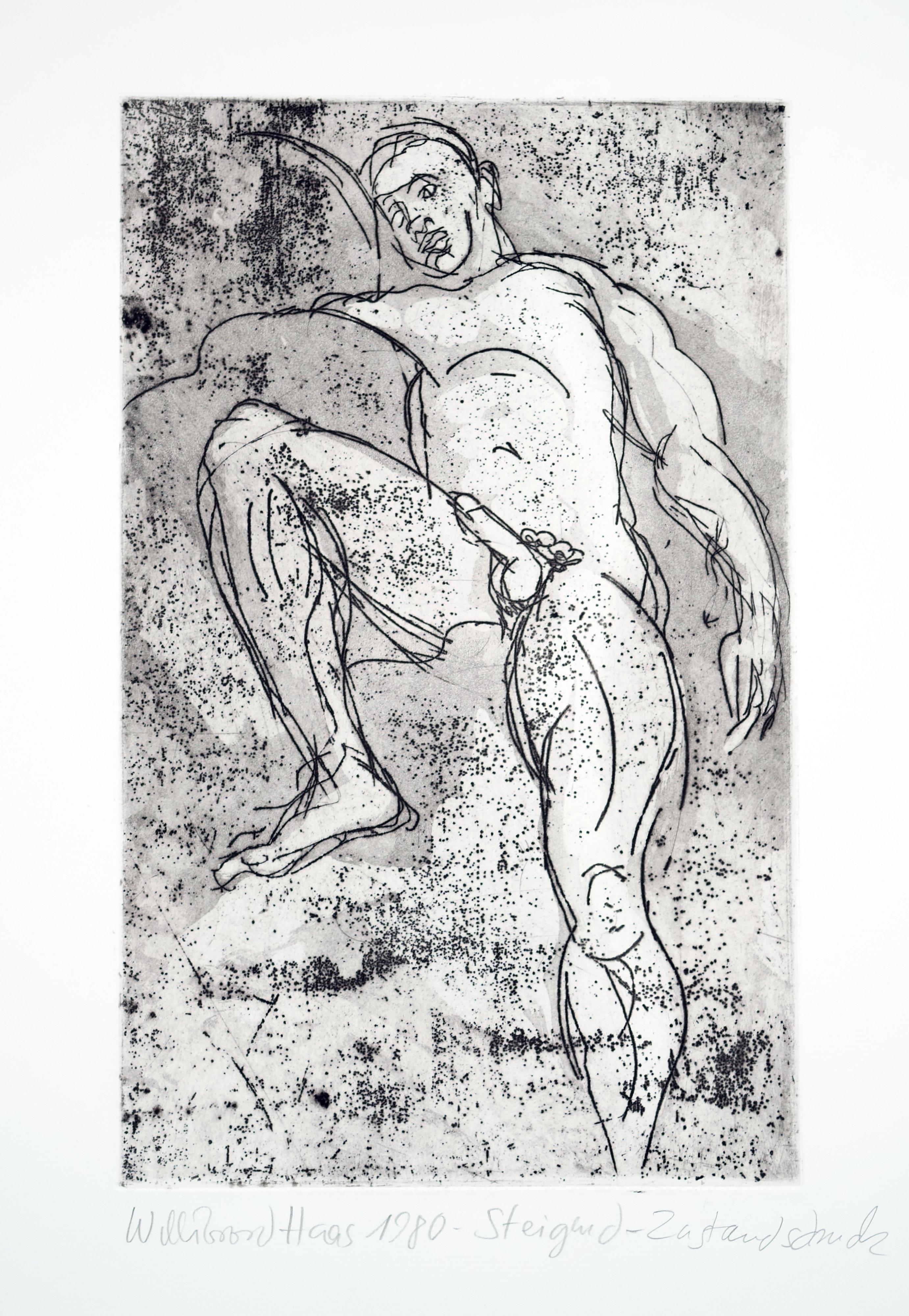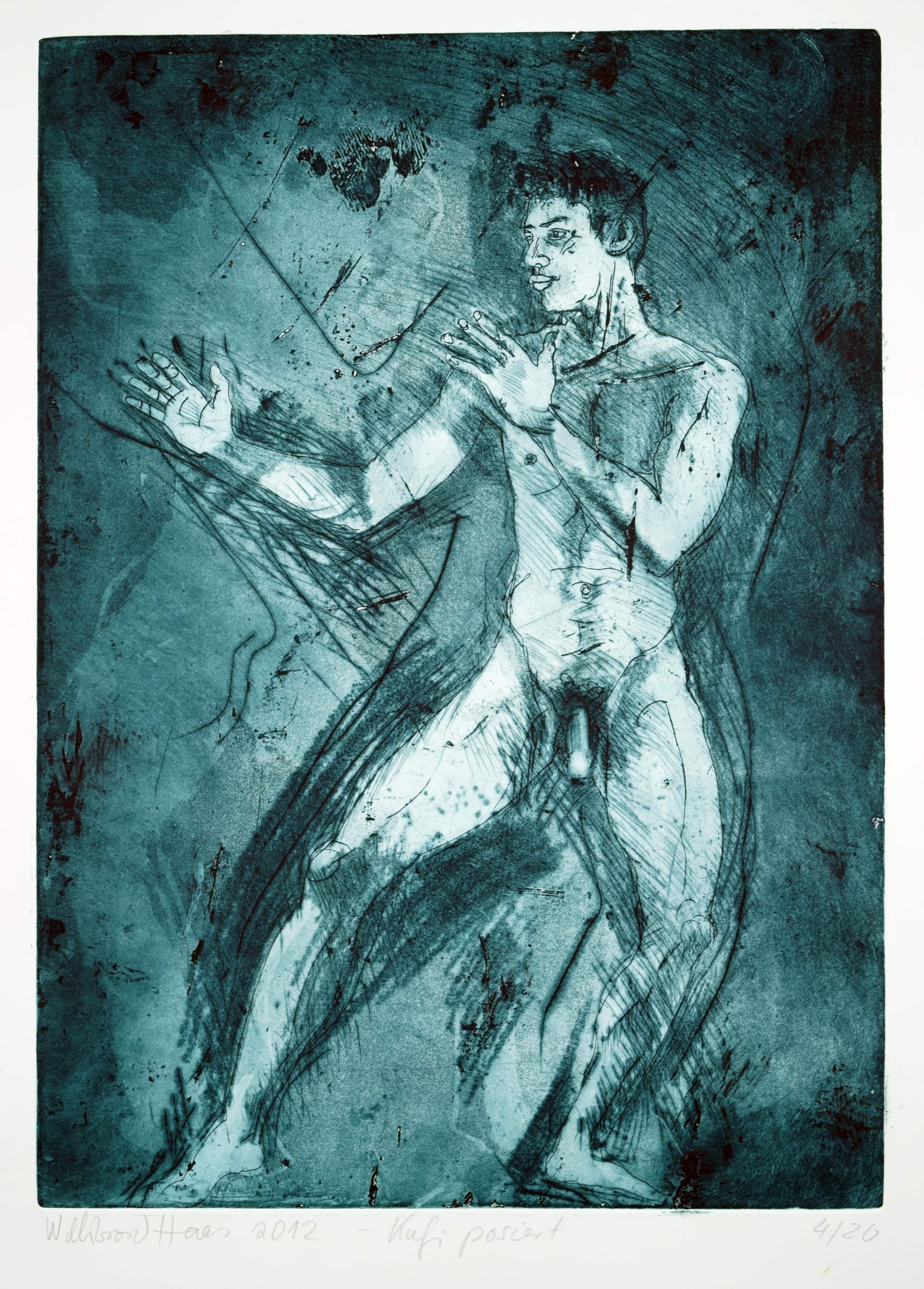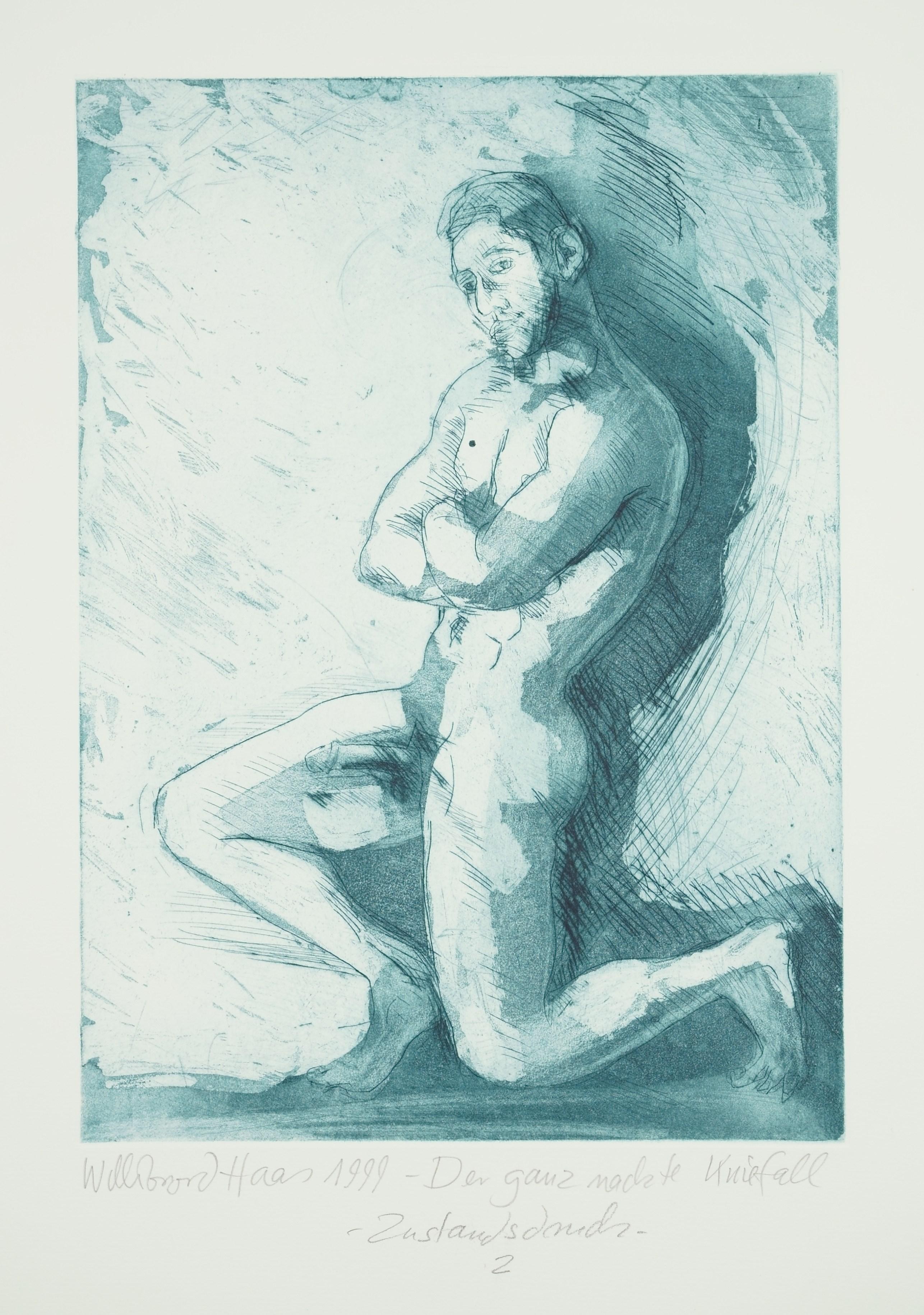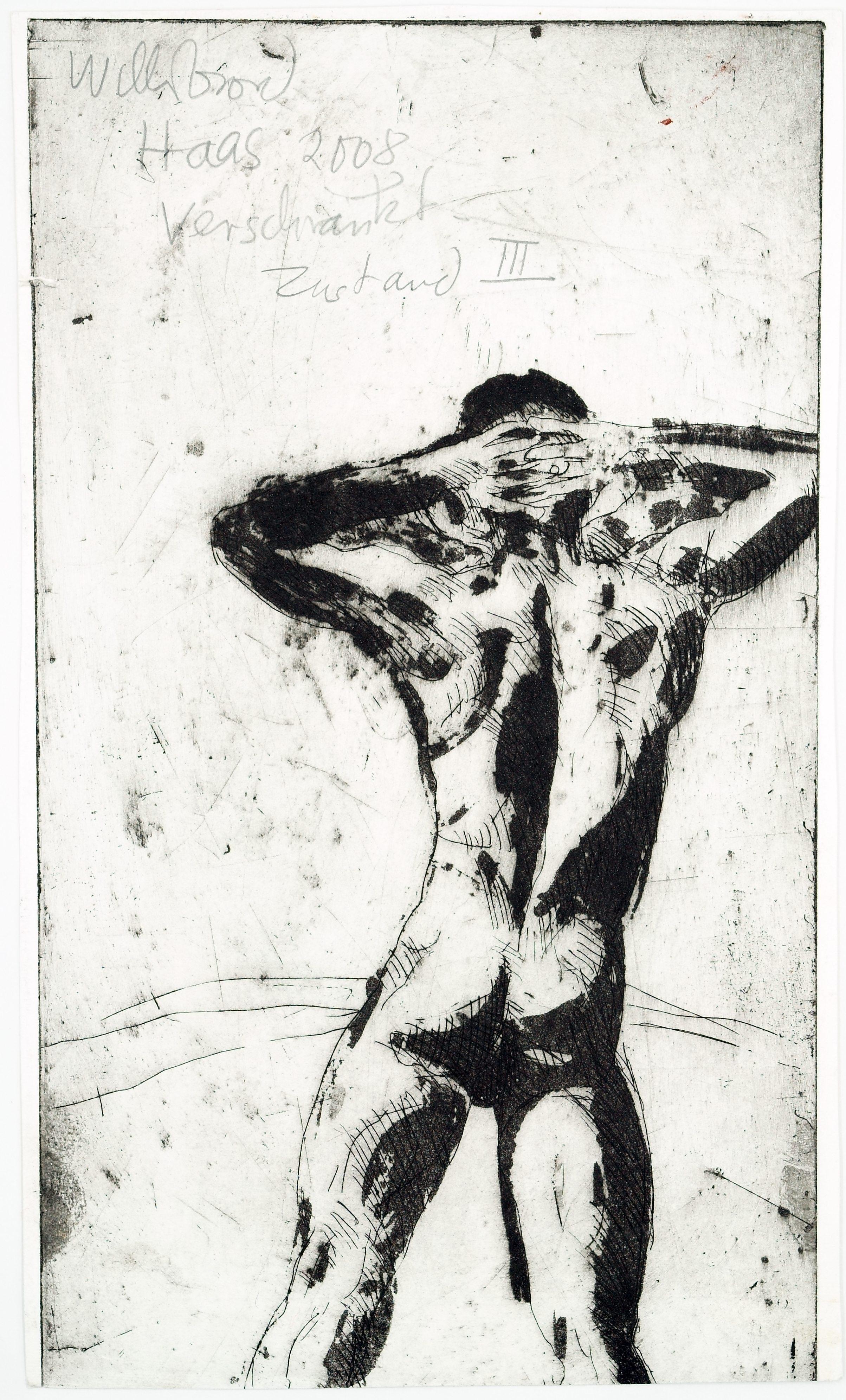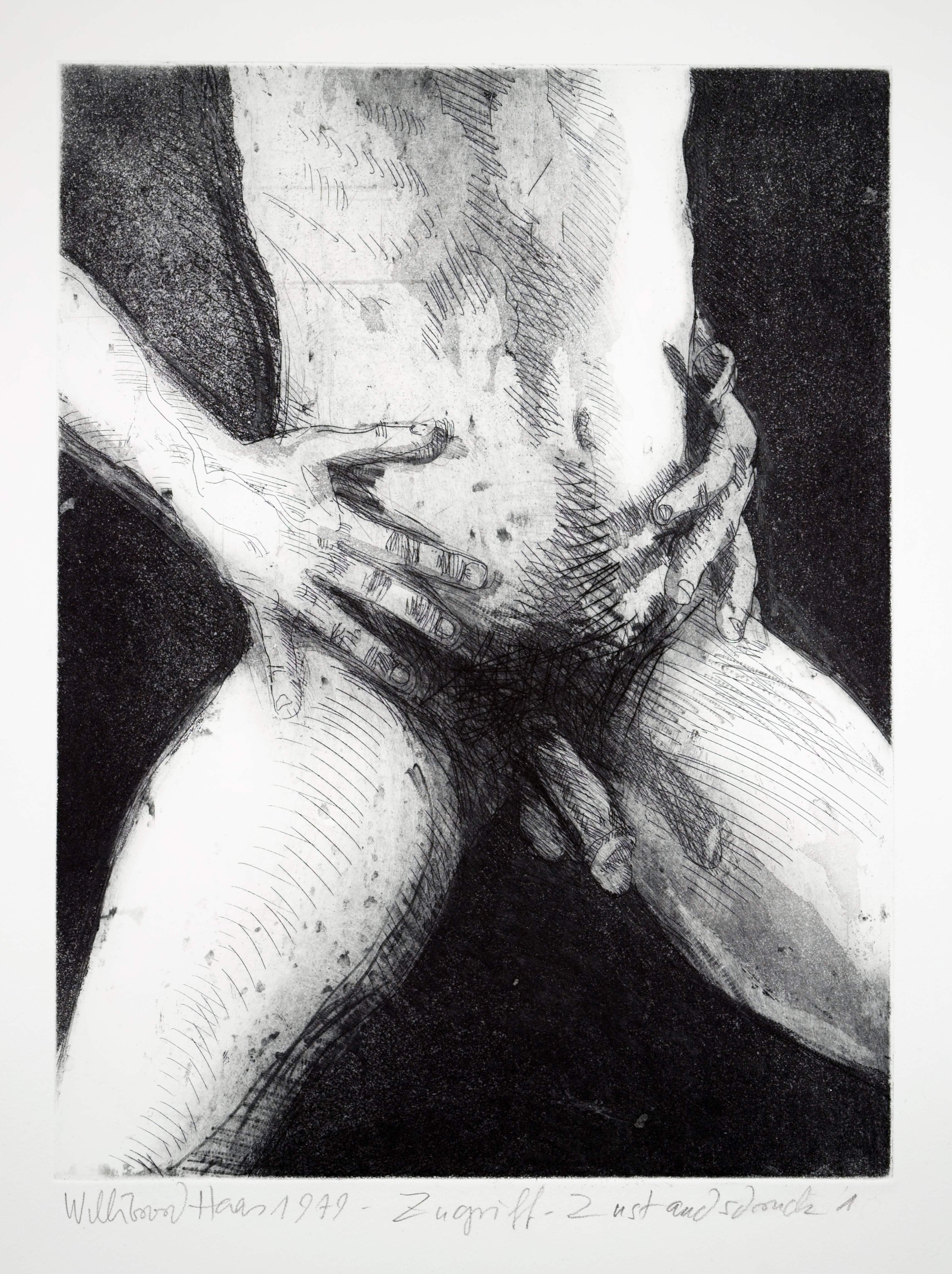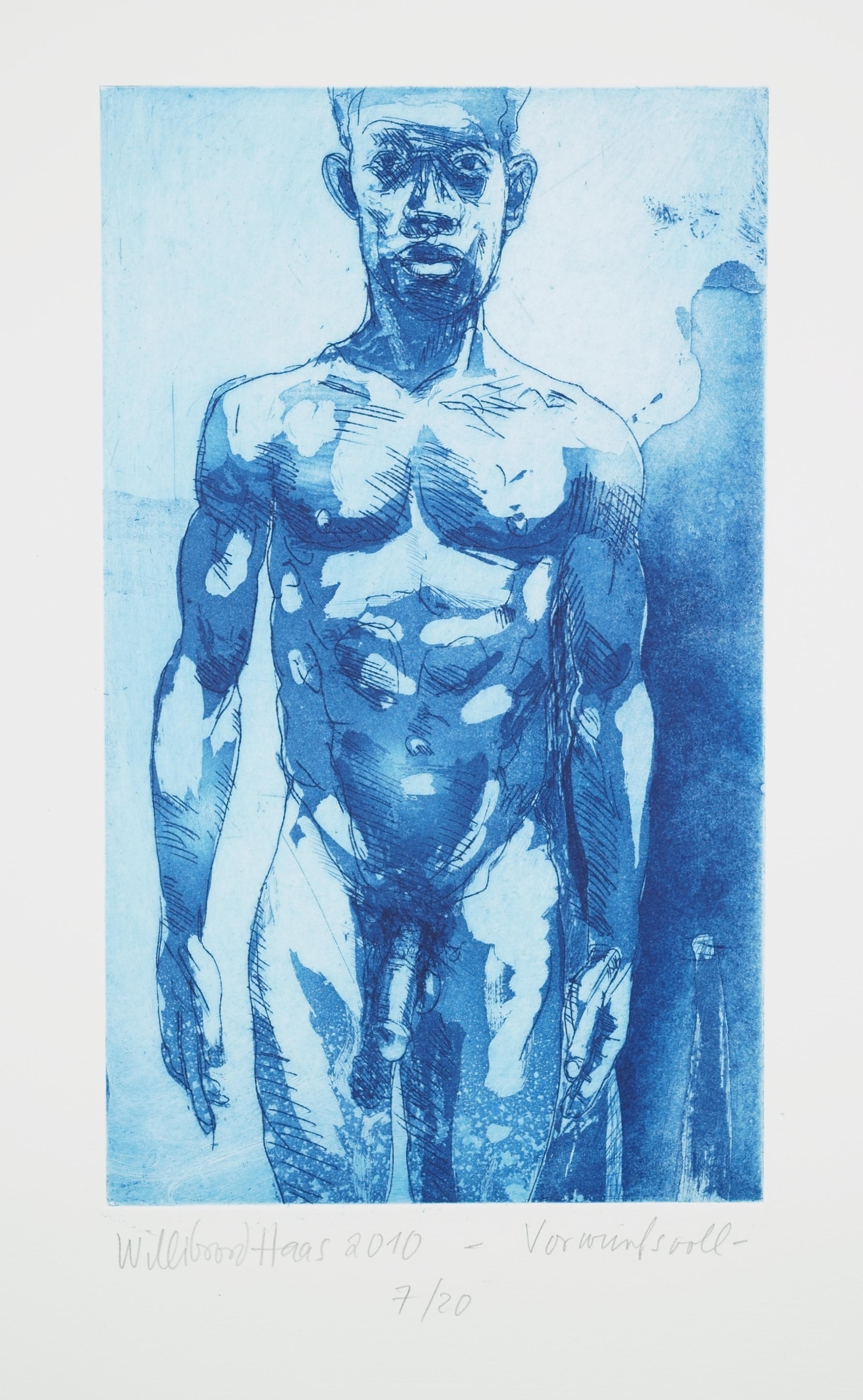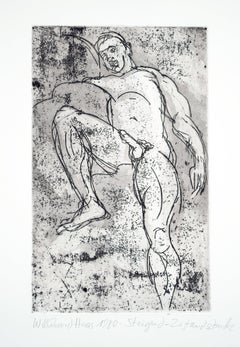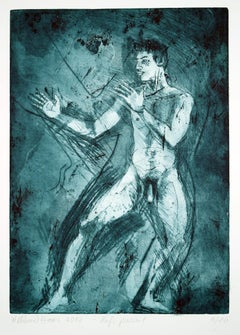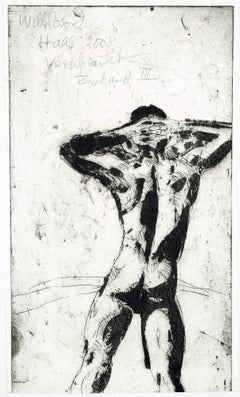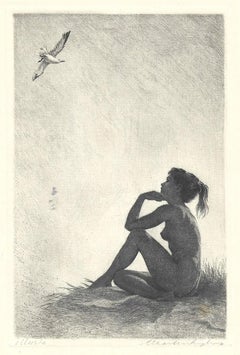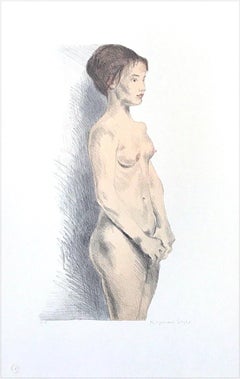Articles similaires à Putti in an allegorical love game / - The Ambivalence of Eros -
Vous voulez plus d'images ou de vidéos ?
Demander au vendeur plus d'images ou de vidéos
1 sur 8
Francesco BartolozziPutti in an allegorical love game / - The Ambivalence of Eros -1764
1764
À propos de cet article
Francesco Bartolozzi (1728 Florence - 1815 Lisbon), Putti in an allegorical love game, around 1764. Crayon engraving on laid paper after a drawing by Guercino, 21 cm x 29 cm (plate size), 38 cm x 56.5 cm (sheet size), marked lower left “Guercino inv.” as an engraving after Guercino and signed lower right “F. Bartolozzi sculp”.
- the wide margin with corner losses, smaller tears, slightly foxed and somewhat dusty, the strong and precise depiction in good condition
- The Ambivalence of Eros -
This sheet showcases the artist's renowned skill, which resulted in his invitation to London and his appointment as "Engraver to the King." Bartolozzi combines a free-flowing, linear design with partial dotting to give the print an unprecedented graphic-painterly effect. This effect corresponds to the emerging appreciation of drawing as a direct form of artistic expression.
On the left, a putto lifts a drapery to reveal a reclining putto, whose body emerges from the shadows. This scene could have been depicted by Titian or Rubens, except here, it is the putti performing this love play imitatively. On the opposite side is a group of three putti that could also have been taken from a painting by Titian or Rubens. One aims a love arrow at the main scene while another strikes water. This creates an ironic interplay between imitation and the depiction of love play, whose ambivalence contributes to the eros of the painting.
About the artist
The son of goldsmith Gaetano Bartolozzi, young Francesco received his first artistic training from his father. He then attended the Academy of Fine Arts in Florence, studied antiquities in Rome, and joined Joseph Wagner's studio in Venice in 1745. Bartolozzi produced numerous engravings based on drawings by Venetian artists for Wagner's art publishing house. These engravings were popular due to their high quality. After engraving drawings by Guercino for George III's librarian, Richard Dalton, Dalton invited Bartolozzi to London in 1764. Bartolozzi lived there for the rest of his life. Bartolozzi was admitted to the Society of Artists, appointed engraver to the king, and elected to the newly founded Royal Academy of Art in 1769. While in London, Bartolozzi acquired the newly discovered crayon technique, which made it possible to translate chalk and charcoal drawings into prints by dotting. This technique became known in England as the "red chalk manner." Bartolozzi further developed this technique by using stippling to create surface effects instead of line-oriented designs, known as "stippled work." He was able to translate painterly and graphic effects into prints with great virtuosity, making Bartolozzi the most popular and sought-after reproduction engraver of his time. Angelika Kauffmann, for example, who also worked in London, had her works engraved by Bartolozzi. In 1802, at the age of 75, Bartolozzi accepted a position as director of the Academy of Fine Arts in Lisbon, where he worked until his death.
GERMAN VERSION
Francesco Bartolozzi (1728 Florenz - 1815 Lissabon), Putten im allegorischen Liebesspiel, 1764. Crayon-Stich auf Bütten nach einer Zeichnung von Guercino, 21 cm x 29 cm (Plattengröße), 38 cm x 56,5 cm (Blattgröße), unten links mit „Guercino inv.“ als Stich nach Guercino ausgewiesen und unten rechts mit „F. Bartolozzi sculp“ signiert.
- der breite Rand mit Eckverlusten, kleineren Einrissen, leicht stockfleckig und etwas angestaubt, die kräftig-präzise Darstellung in gutem Zustand
- Die Ambivalenz des Eros -
Das Blatt veranschaulicht die gefeierte Virtuosität des Künstlers, die zum Ruf nach London und seiner Ernennung zum „Engraver of the King“ geführt hat. Bartolozzi verbindet hier eine frei-flüssige lineare Gestaltung mit einer partiellen Punktierung, so dass die Druckgrafik eine bisher nicht gesehene zeichnerisch-malerische Wirkung erhält, was der damals einsetzenden Schätzung der Zeichnung als unmittelbarem künstlerischen Ausdruck entspricht.
Links hebt ein Putto eine Draperie an und enthüllt einen liegend posierenden Putto, dessen Körper aus dem Schatten heraus sichtbar wird. Eine Szene wie sie auch von Tizian oder Rubens dargestellt worden sein könnte, nur dass es hier Putten sind, die dieses Liebesspiel auf nachahmende Weise vollführen. Gegenüber steht eine Gruppe von drei Putten, die ebenfalls einem Gemälde von Tizian oder Rubens entnommen sein könnten. Einer von ihnen zielt mit einem Liebespfeil auf die Hauptszenerie, während der andere ‚Wasser schlägt‘. Ein ironisches Wechselspiel zwischen Nachahmung und Aufzeigen der Natur des Liebesspiels, das n seiner Ambivalenz zum Eros des Bildes beiträgt.
zum Künstler
Als Sohn des Goldschmieds Gaetano Bartolozzi erhielt der junge Francesco bei seinem Vater eine erste künstlerische Ausbildung. Anschließend besuchte er die Florentiner Kunstakademie, hielt sich zum Antikenstudium in Rom auf und ging dann nach Venedig, wo er 1745 in das Atelier Joseph Wagners eintrat. Für dessen Kunstverlag fertigte Bartolozzi zahlreiche Stiche nach Zeichnungen venezianischer Künstler an, die sich aufgrund ihrer kongenialen Umsetzung großer Beliebtheit erfreuten. Nachdem er für den Bibliothekar George III., Richard Dalton, Zeichnungen von Guercino gestochen hatte, lud ihn dieser 1764 nach London ein, wo Bartolozzi fortan ansässig war. Er wurde in die Society of Artists aufgenommen, zum Kupferstecher des Königs ernannt und 1769 in die neugegründete Königliche Kunstakademie gewählt. In London eignete er sich die neuerfundene Punktier- oder Crayon-Manier an, die es erlaubt, durch Punktierungen Kreide- und Kohlezeichnungen in die Druckgrafik zu übersetzen, weshalb sie in England auch unter dem Namen ‚Red Chalk Manner‘ bekannt geworden ist. Bartolozzi entwickelte diese Technik weiter, indem er statt einer linienorientierten Gestaltung durch Punktierungen Flächenwirkungen erzeugte, was als ‚Stippled Work‘ bezeichnet wurde. Auf diese Weise vermochte er sowohl malerische wie zeichnerische Wirkungen druckgrafisch umzusetzen, was er mit höchster Virtuosität beherrschte, so dass Bartolozzi zum beliebtesten und gefragtesten Reproduktionsstecher seiner Zeit wurde. So ließ beispielsweise Angelika Kauffmann, die ebenfalls in London tätig war, ihre Werke von Bartolozzi stechen. Im Alter von 75 Jahren folgte er, 1802, dem Ruf nach Lissabon, wo Bartolozzi bis zu seinem Tode als Direktor der Kunstakademie wirkte.
- Créateur:Francesco Bartolozzi (1727-1815, Italien)
- Année de création:1764
- Dimensions:Hauteur : 38 cm (14,97 po)Largeur : 56 cm (22,05 po)Profondeur : 1 cm (0,4 po)
- Support:
- Mouvement et style:
- Période:1760-1769
- État:
- Adresse de la galerie:Berlin, DE
- Numéro de référence:1stDibs : LU2438216392712
À propos du vendeur
5,0
Vendeur Or
Vendeurs premium dont la note est supérieure à 4,3 et le délai de réponse de 24 heures maximum
Établi en 2014
Vendeur 1stDibs depuis 2023
17 ventes sur 1stDibs
Temps de réponse habituel : 6 heures
- ExpéditionRecherche du devis...Expédition depuis : Berlin, Allemagne
- Politique des retours
Certaines parties de cette page ont été traduites automatiquement. 1stDibs ne garantit pas l'exactitude des traductions. L'anglais est la langue par défaut de ce site web.
Garantie d'authenticité
Bien qu'il soit peu probable que la situation se présente, dans le cas où vous rencontreriez un problème d'authenticité d'un article, contactez-nous dans un délai d'un an pour obtenir un remboursement intégral. DétailsGarantie de remboursement
Si votre article n'est pas conforme à la description, est endommagé pendant le transport ou ne vous est pas livré, contactez-nous sous 7 jours pour obtenir un remboursement intégral. DétailsAnnulation sous 24 heures
Vous disposez d'un délai de 24 heures pour annuler votre achat sans motif.Des vendeurs professionnels agréés
Nos vendeurs de renommée mondiale doivent respecter des normes strictes en matière de service et de qualité, afin de préserver l'intégrité de nos fiches produit.Garantie d'alignement des prix
Si vous constatez qu'un autre vendeur a mis en vente le même article à un prix inférieur sur un autre site, nous nous alignerons sur ce prix.Livraison en toute confiance à l'international
Notre réseau de transporteurs de premier ordre propose des options d'expédition spécialisées dans le monde entier, y compris des livraisons personnalisées.Plus d'articles de ce vendeur
Tout afficherRising
Willibrord Haas (*1936 Schramberg), levant, 1980. Gravure, 35 cm x 22 cm (format de la plaque), 53,5 cm x 38 cm (format de la feuille). Signé "Willibrord Haas" au crayon par l'artist...
Catégorie
années 1980, Réalisme, Estampes - Nus
Matériaux
Papier
370 $US
Les poses de Kufi
Willibrord Haas (*1936 Schramberg), Kufi poses, 2012. Etching, 44 cm x 32 cm (plate size), 54 cm x 37.5 cm (sheet size). Signed “Willibrord Haas” in lead by the artist, dated “2012”,...
Catégorie
années 2010, Réalisme, Estampes - Nus
Matériaux
Papier
La protébration entièrement nue
Willibrord Haas (*1936 Schramberg), La prostration complètement nue, 1999. Gravure, 32,5 cm x 23,5 cm (format de la plaque), 54 cm x 37,5 cm (format de la feuille). Signée "Willibror...
Catégorie
années 1990, Réalisme, Estampes - Nus
Matériaux
Papier
Enchevêtrés
Willibrord Haas (*1936 Schramberg), Entangled, 2008. Eau-forte, 28 cm (hauteur) x 17 cm (largeur). Signé "Willibrord Haas" au crayon par l'artiste, daté "2008", titré "Verschränkt" e...
Catégorie
Début des années 2000, Réalisme, Estampes - Nus
Matériaux
Papier
Access
Willibrord Haas (*1936 Schramberg), Access, 1979. etching, 40 cm x 30 cm (plate size), 54 cm x 37.5 cm (sheet size). Signed “Willibrord Haas” in pencil by the artist, dated “1979”, t...
Catégorie
années 1970, Réalisme, Estampes - Nus
Matériaux
Papier
335 $US
Reproches
Willibrord Haas (*1936 Schramberg), Reproachful, 2010. Eau-forte, 33,5 cm x 20 cm (format de la plaque), 54 cm x 37,5 cm (format de la feuille). Signé "Willibrord Haas" en plomb par ...
Catégorie
années 2010, Réalisme, Estampes - Nus
Matériaux
Papier
335 $US
Suggestions
Chez la sauna, années 1960, papier, lithographie, 38 x 49 cm
Au sauna
1960, papier, lithographie, 38x49 cm
Dzidra Bauma (1930)
Dzidra Bauma travaille avec la technique de l'aquarelle. Elle peint des compositions figuratives, des portraits, ...
Catégorie
années 1960, Réalisme, Estampes - Nus
Matériaux
Papier, Lithographie
444 $US Prix de vente
20 % de remise
Stride for Days and Stride for Days Diptyque
Stride for Days et Stride for Days Upside Down Diptych d'Amy Gardner [2021]
édition_limitée
Sérigraphie
Edition numéro 25
Taille de l'image : H:59,4 cm x L:42 cm
Taille complète de ...
Catégorie
XXIe siècle et contemporain, Réalisme, Estampes - Figuratif
Matériaux
Papier, Écran
Illusie
Circa 1960. Eau-forte et gravure sur papier vergé crème, 5 3/4 x 4 pouces (141 x 102 mm), marges. Quelques légères décolorations éparses dans les marges, quelques petits tons de mat....
Catégorie
Milieu du XXe siècle, Réalisme, Estampes - Nus
Matériaux
Papier fait main, Gravure, Eau-forte
Lithographie signée STANDING NUDE, portrait réaliste de jeune femme, dessin de figure
Par Raphael Soyer
STANDING NUDE est une lithographie originale dessinée à la main par Raphael Soyer, le célèbre peintre, dessinateur et graveur réaliste américain d'origine russe. Imprimé sur du papie...
Catégorie
années 1970, Réalisme, Estampes - Nus
Matériaux
Lithographie
STANDING NUDE DARK HAIR Signé Gravure originale, Femme pleinement figurée, Pose Casual
Par Raphael Soyer
STANDING NUDE DARK HAIR est une gravure originale signée de Raphael Soyer, le célèbre peintre, dessinateur et graveur réaliste américain d'origine russe. Imprimé sur du papier d'arch...
Catégorie
années 1970, Réalisme, Estampes - Nus
Matériaux
Lithographie
480 $US Prix de vente
28 % de remise
L'explorateur
Giovanni Domenico Campiglia, "Explorateur", gravure, 1734, édition inconnue, rare. Signé "Dom. Campiglia del." dans la matrice, en bas à gauche. Une belle impression, sur papier verg...
Catégorie
années 1730, Réalisme, Estampes - Nus
Matériaux
Gravure
